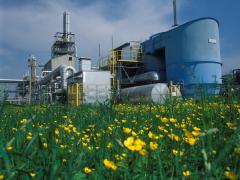National Energy Outlook 2016
Although the target of 16% renewable energy by 2023, as set in the Dutch Energy Agreement, is within sight, the National Energy Outlook (NEV) 2016 shows that the target of 14% renewable energy by 2020 is not likely to be achieved; nor will the target of 100 PJ in additional energy saving by 2020. The Energy Agreement’s employment target for the 2014–2020 period, however, is within reach. The average household energy bill in 2020 is projected to be lower than according to last year projections.
The National Energy Outlook 2016
The National Energy Outlook (NEV) is an annual reference source for political decision-making and societal debate about energy, within the Netherlands. It describes the observed developments in the Dutch energy system and in greenhouse gas emissions, from 2000 to current times, and presents projections up to 2035, on the basis of both implemented and proposed policy. The 2016 report provides a quantitative basis for assessment of the Dutch Energy Agreement in 2016. The NEV is compiled by ECN, PBL and CBS (Statistics Netherlands), with contributions by the Netherlands Enterprise Agency (RVO.nl).
Target renewable energy 2023 within sight
The renewable energy target for 2020 (14%) is expected to reach 12.5% to 12.7%, depending on the definition. The 16% renewable energy target for 2023, however, will be achieved, partly thanks to the construction of offshore wind parks. The additional objective of the agreement to save a further 100 PJ by 2020 will not be achieved, and is calculated to be 68 PJ.
Greenhouse gas emission level decreasing more rapidly towards 2020
Greenhouse gas emissions are projected to decrease by 23%, between 1990 and 2020. These reductions over the 1990–2020 period are projected to be greater than had previously been calculated for the NEV 2015. In the Urgenda climate case, the court ordered the Dutch Government to realise at least 25% emission reduction, something that has now come closer. The NEV does point out that both emission statistics and emission projections are surrounded by a considerable degree of uncertainty. The report also shows that, between 2020 and 2030, greenhouse gas emissions will not decrease much further. After 2030, emissions are projected to decrease some more, leading to a 30% reduction by 2035, compared to 1990 levels.
Energy prices lower than projected earlier
Both current and future energy prices are substantially lower than projected last year. For the longer term, this is also due to the Paris Climate Agreement of 2015.
Furthermore, the NEV 2016 shows that the Dutch energy system has connections abroad and cannot be considered in isolation. The Netherlands will still be importing a fair amount of electricity from Germany, by 2020. The German nuclear power phase-out in the ensuing years will partly be compensated for by increased production from Dutch coal-fired power plants and the growing production of wind energy.
With a maximum natural gas production of 24 billion m3 from the Groningenveld, the Netherlands will be able to meet domestic demand, for many years to come. Not until somewhere between 2030 and 2035 will natural gas imports outweigh the amount exported.
Authors
Specifications
- Publication title
- National Energy Outlook 2016
- Publication date
- 8 November 2016
- Publication type
- Publication
- Publication language
- English
- Product number
- 2070




